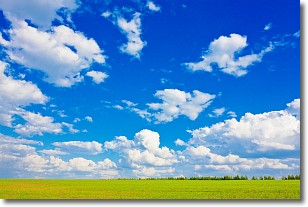Weather Alert in Iowa
Flash Flood Warning issued July 11 at 6:30PM CDT until July 12 at 12:30AM CDT by NWS Quad Cities IA IL
AREAS AFFECTED: Clinton, IA; Scott, IA; Carroll, IL; Rock Island, IL; Whiteside, IL
DESCRIPTION: FFWDVN The National Weather Service in Quad Cities has issued a * Flash Flood Warning for... Eastern Clinton County in east central Iowa... East Central Scott County in east central Iowa... South Central Carroll County in northwestern Illinois... Northeastern Rock Island County in northwestern Illinois... Northwestern Whiteside County in northwestern Illinois... * Until 1230 AM CDT. * At 630 PM CDT, trained weather spotters reported thunderstorms producing heavy rain across the warned area. Reports of 1 to 2 feet of water over the roads within Clinton, Iowa. Between 2 and 4 inches of rain have fallen. Flash flooding is ongoing. HAZARD...Flash flooding caused by thunderstorms. SOURCE...Trained spotters reported. IMPACT...Flash flooding of small creeks and streams, urban areas, highways, streets and underpasses as well as other poor drainage and low-lying areas. * Some locations that will experience flash flooding include... Clinton, Camanche, Fulton, Port Byron, Albany, Princeton, Cordova, Andover, East Clinton, Thomson, Rock Creek Park, Rock Creek Marina and Campground, Folletts, Bulgers Hollow, Princeton Wildlife Area, Teeds Grove and Camp Miss-Elk-Ton.
INSTRUCTION: Turn around, don't drown when encountering flooded roads. Most flood deaths occur in vehicles. Be especially cautious at night when it is harder to recognize the dangers of flooding. In hilly terrain there are hundreds of low water crossings which are potentially dangerous in heavy rain. Do not attempt to cross flooded roads. Find an alternate route.
Want more detail? Get the Complete 7 Day and Night Detailed Forecast!
Current U.S. National Radar--Current
The Current National Weather Radar is shown below with a UTC Time (subtract 5 hours from UTC to get Eastern Time).

National Weather Forecast--Current
The Current National Weather Forecast and National Weather Map are shown below.

National Weather Forecast for Tomorrow
Tomorrow National Weather Forecast and Tomorrow National Weather Map are show below.

North America Water Vapor (Moisture)
This map shows recent moisture content over North America. Bright and colored areas show high moisture (ie, clouds); brown indicates very little moisture present; black indicates no moisture.

Weather Topic: What are Contrails?
Home - Education - Cloud Types - Contrails
 Next Topic: Cumulonimbus Clouds
Next Topic: Cumulonimbus Clouds
A contrail is an artificial cloud, created by the passing of an
aircraft.
Contrails form because water vapor in the exhaust of aircraft engines is suspended
in the air under certain temperatures and humidity conditions. These contrails
are called exhaust contrails.
Another type of contrail can form due to a temporary reduction in air pressure
moving over the plane's surface, causing condensation.
These are called aerodynamic contrails.
When you can see your breath on a cold day, it is also because of condensation.
The reason contrails last longer than the condensation from your breath is
because the water in contrails freezes into ice particles.
Next Topic: Cumulonimbus Clouds
Weather Topic: What are Cumulus Clouds?
Home - Education - Cloud Types - Cumulus Clouds
 Next Topic: Drizzle
Next Topic: Drizzle
Cumulus clouds are fluffy and textured with rounded tops, and
may have flat bottoms. The border of a cumulus cloud
is clearly defined, and can have the appearance of cotton or cauliflower.
Cumulus clouds form at low altitudes (rarely above 2 km) but can grow very tall,
becoming cumulus congestus and possibly the even taller cumulonimbus clouds.
When cumulus clouds become taller, they have a greater chance of producing precipitation.
Next Topic: Drizzle
Current conditions powered by WeatherAPI.com




